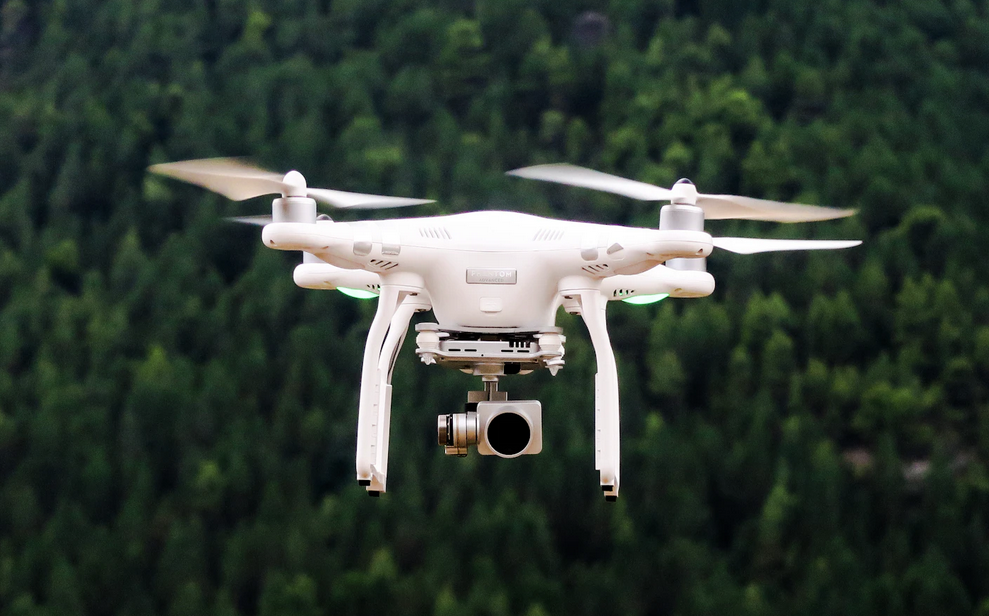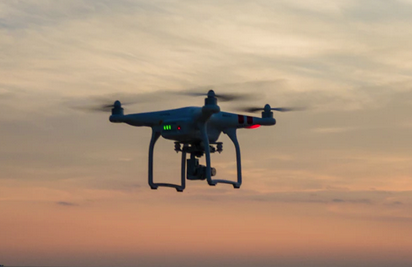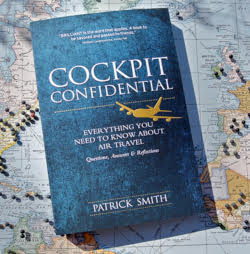The Drones Danger

December 16, 2024
DRONES HAVE BEEN all over the news of late. While I can’t speak to what enemies or other state actors might be behind the ongoing rash of sightings, it gives us a good opportunity to revisit the dangers drones can pose to commercial aircraft.
The issue has moved from an “emerging threat,” as I described it not long ago, to an established one. The number of close encounters between airplanes and drones continues to grow. Here in the United States, the FAA says it receives over a hundred new reports every month — and it’s perhaps just a matter of time before we see a collision. (Just this past weekend, two men were arrested after flying a drone through prohibited airspace near Logan Airport here in Boston.)
The FAA, with its unquenchable enthusiasm for mind-paralyzing acronyms and abbreviations, now refers to all remotely piloted flying machines as UAS or “unmanned aerial systems.” Whatever you call them, they’re potentially lethal.
The amount of damage a collision might cause depends on two things: the speed of the plane and the size — which is to say the weight — of the drone. The heavier the drone, the greater the potential damage. A jetliner traveling at 250 miles per hour (in the U.S., that’s the maximum speed when below 10,000 feet), hitting a 25-pound UAS creates about 40,000 pounds of impact force.

Most hobby drones weigh less than ten pounds and don’t fly very high, but bigger, heavier machines are out there, and we’ll be seeing more of them: paramilitary border patrol drones; police department surveillance drones; Bezos and his fleet dropping iPhones and toasters from the sky.
It’s these larger drones that are of greatest concern. If an operator should lose control of one of these things, or it otherwise wanders into airspace it shouldn’t be in, the results could be catastrophic — particularly if the collision were to damage the plane’s control surfaces or cockpit.
Even a collision with a lightweight drone could result in serious, and expensive, damage. A small drone impacting an engine would be unlikely to cause a crash, but it could easily cause the failure of that engine and millions of dollars of repair bills. Windscreens and other components are vulnerable as well. Small drones are invisible to air traffic control and onboard radar.

Rules have been on the books from the start, though in typical FAA fashion they’re a confusing spaghetti-knot of dos and don’ts. And in 2015, regulators enacted a mandatory registration process for all UASs weighing more than half a pound.
Have all hobbyists been complying with this program? Of course not, but I suppose its purpose is less about tracking users than it is about creating awareness. Ultimately, it’s up to users policing themselves.
The problem all along has been mostly one of ignorance: most drone flyers aren’t trying to be reckless or cause mayhem; they simply don’t realize how hazardous a collision between and plane and a drone could be. This mindset needs changing. More than coming up with technical fixes or enforcing complex airspace rules, we need to encourage awareness and common sense.
Related Story:
LASERS, LASERS, EVERYWHERE
Upper and lower photos courtesy of Unsplash.
Center photo by the author.




Leave a Comment
Maximum 1500 characters. Watch your spelling and grammar. Poorly written posts will be deleted!
14 Responses to “The Drones Danger”
You are viewing newest comments first. Click to reverse order
Drone pilot caught
https://www.nbclosangeles.com/news/california-wildfires/drone-collision-super-scooper-palisades-fire/3620389/
A Super Scooper firefighting plane was grounded after it was struck by a drone over the Palisades Fire.
Fire officials in Southern California informed the FAA that a firefighting aircraft struck a drone Thursday as it was flying over the largest of the region’s fires near the Los Angeles County coast, the agency said.
https://www.nbclosangeles.com/news/california-wildfires/drone-palisades-fire/3600068/
A drone damaged a firefighting plane over the biggest of the LA fires.
https://www.nbclosangeles.com/news/california-wildfires/drone-palisades-fire/3600068/
Kevin> …authorities have been slacking off or oblivious to the need for greater regulation and enforcement…
I don’t know about the USA or other countries, but in the UK and Canada the CAA & its Canadian equivalent have introduced (more) regulations to control *all* UAVs inc. Were I you I would be cautious in a call for immediate action as knee-jerk reponses usually create bad and (often) unworkable legislation. The BMFA (British Model Flying Assoc.) had to work very hard to prevent the UK legislation killing aeromodelling in the UK stone dead.
Although I think some of the CAA’s regulations for model aircraft flight are unduly restrictive – the current bone of contention is mandatory RC dethermalisers for Free Flight models – I am prepared to accept them as a means of reducing the sort of idiocy reported in the link below.
https://www.bbc.com/news/uk-england-derbyshire-64241328
I have a horrible feeling that this situation has been allowed to creep into the danger zone while authorities have been slacking off or oblivious to the need for greater regulation and enforcement. And that it’s going to take a major tragedy to shake people into attention. After it’s too late.
Imagine this problem being allowed to fester if a terror group had organized a massive drone attack on infrastructure here, which is well within the bounds of feasibility. Is that what it’s gonna take to get some action? Or an airliner forced down by a collision?
I was going to do a bit of math, but we can just look at existing birdstrike tests to model the potential damage. Only these drones, like in your example, are 3-6 times as heavy as the bird weight mentioned in the FARs.
It’s not going to be good for fan blades or windscreens.
I hear this so often: Pounds of impact force. I think that’s a ridiculous measure.
How do you calculate that? IMHO if I drop a solid 1kg weight from 1m onto a concrete floor the impact force is ENORMOUS. If the weight stops in .1mm it will require at least 10000 G of acceleration, f=m*a, so we get a force of about 10^5 N.
If we assume the drone creates a 10cm dent into the airplane, a 11.25kg drone hitting an airplane going 125m/s. I get 7800 G, f = m.a , so about 860kN of force. almost 200000 pounds of force. But this heavily depends on the dent that the drone makes in the plane. In this case I assumed a 10cm, 4″ dent. And when the damage remains a 10cm dent… there is no problem. Sure: An expensive repair, but no casualties.
“Let the states regulate drone airspace”
That suggestion is a recipe for disaster.
States don’t have more knowledge or wisdom than national government agencies. Today, they aren’t much different from other states as they were when the country was founded. Also, State governments are cheaper and easier to influence, as has been shown.
John, it’s also trivial to cause chaos with laser pointers too. Fact is, people need to get some morals and understanding that there are people aboard those aircraft, and they aren’t in a video game.
Well, Andreas, how do you propose we do that without endangering public safety? It’s a good idea to think though something before putting it out there.
We should shoot down more of those drones.
When people regularly lose their toys, they will hopefully stop buying and flying them.
John > It’s also a way to easily cause chaos …
… I’m surprised – and thankful – it hasn’t been done yet.
Oh, but it has.
https://en.wikipedia.org/wiki/Gatwick_Airport_drone_incident
It’s also a way to easily cause chaos by just flying a bunch of drones near a bunch of the busiest airports at the same time, such as right around busy travel days like Thanksgiving weekend. Whether it’s foreign countries causing economic issues to the airlines who have to re-route (or supply chains by doing it around cargo hubs like Memphis or Indy), or just vandalism type of nuisances… I’m surprised – and thankful – it hasn’t been done yet.
The flip side is the FAA’s stance that all navigable airspace is their domain, without ever defining exactly what navigable airspace is. For example, my Skydio 2 can easily navigate (autonomously) through a somewhat dense forest only inches off the ground. So the FAA says that’s “navigable.” My Mavic 3 can safely fly 5 feet off the ground and less than a foot away from an object such as a house or automobile. So the space between my car and my garage door is “navigable,” and therefore subject to regulation by the FAA.
Is your 757 able to navigate through dense forest or along a suburban street? Does someone need authorization to plant a tree in class E airspace? Some trees can get pretty big you know…
The FAA has a problem. They’ve been unwilling to come up with a definition of navigable airspace. And they’re unwilling to cede control to anyone. The old way of making ATC the first line of enforcement won’t work when you don’t have to file a flight plan or takeoff/land from a purpose-built facility. Local LEOs don’t like the Karens calling in when someone is flying near them, so they’re demanding the ability to hand out tickets for flying over the neighborhood.
I think in the long run the FAA is going to have to give up 400′ and below in class G airspace, and make some concessions to LEOs in the rest. Let the states regulate drone airspace, the FAA can regulate the rest.